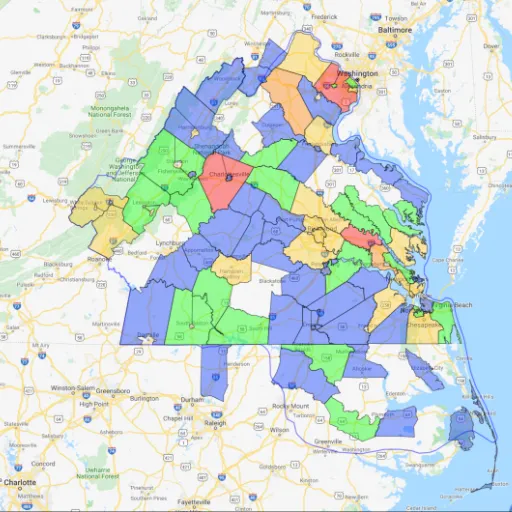When preparing for unexpected power outages, selecting an appropriately sized generator is crucial to ensure the uninterrupted operation of essential appliances and systems in your home. Choosing the wrong size can lead to issues such as insufficient power, equipment damage, or unnecessary expense. This comprehensive guide will walk you through the key considerations and technical factors involved in determining the right generator capacity for your specific needs, including power requirements, generator types, and load management.
What types of power generators are available for home use?
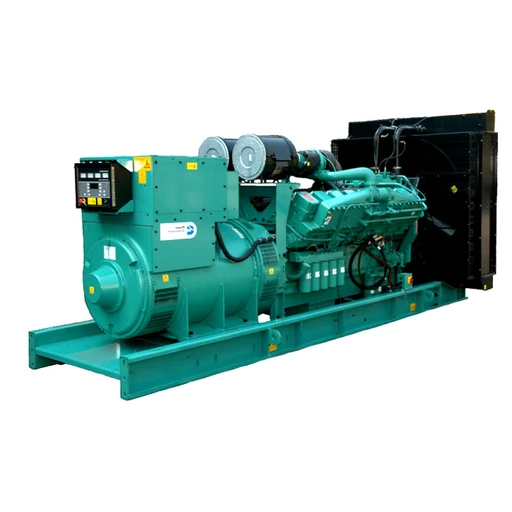
Portable generators vs. standby generators
There is a distinction in purpose, requirements, and costs for standby generators and portable generators. Both serve different needs.
Portable Generators
Usually, portable generators are referred to as compact and mobile units that power appliances during outages. It is powered by gasoline, diesel, or propane and nursery skillset which includes manual setup and connection via extension cords or transfer switch. Typically, these units are ideal for an individual powering a handful of tools or limited apps.
- Power Output: Ranges between 1,000 to 10,000 watts. That is 1 to 10 kW.
- Runtime: Depends on fuel capacity and load; capable of running for 6-16 hours while being full tank.
- Fuel Efficiency: It is relative to the engine size and pull required.
- Noise Level: Portable systems can be louder than standby systems. Their volume can reach between 50 to 90 decibels (dB) on the scale.
- Mobility: They are equipped with wheels and handles, which makes their transportation rather easy.
Standby Generators
These systems are custom-built to automatically provide power during an outage. They electrically tie into the household through a designated transfer switch and are primarily powered by propane and natural gas. Standby generators provide an entire household with seamless and uninterrupted power.
- Power Output: Electricity supply ranges from 7,000 to over 50,000 watts (7–50 kW) suitable for homes and business establishments.
- Automatic Operation: These types of units detect outages and begin working within seconds because of their integrated automatic transfer switch.
- Fuel Supply: Eliminates the hassle of weather conditions such as freezing weather as they are powered by a constant fuel source.
- Noise Level: These units are quieter on average, 60–70 decibels (dB) due to their enclosures being soundproof.
- Lifespan and Maintenance: These are built to last with minimal maintenance as opposed to portable units.
By carefully evaluating your power requirements and specific circumstances, you can select the generator type that best aligns with your operational needs and budget constraints.
Natural gas, propane, and gasoline-powered options
In the case of natural gas, propane, and gasoline-powered generators, each option possesses different considerations.
- Natural Gas: Generators that run on natural gas are most suitable for regions that are connected to a utility supply. These generators can be fueled consistently, and their emissions are lower than all other options. Moreover, they are also economical on long-term investments like natural gas-powered structures since they tend to be cheaper in the market. However, they are not the best for regions that have an unstable gas supply. Technical Parameter: Depending on the load and generator specifications, fuel efficiency is set at an average between 15-25 ft³ of natural gas for every kilowatt hour generated.
- Propane: Thanks to its ability to be stored for long durations without losing quality, propane is a widely used fuel for portable and standby generators. Due to its clean burning attributes, propane is considered suitable for both stationary as well as portable applications. On the other hand, high consumption scenarios would need larger storage vessels. Technical Parameter: A propane generator burns through 0.4-0.6 gallons of propane for every hour while under a load of 5- 7kW.
- Gasoline: Gasoline generators are relatively easy to procure and usually do not have high costs in initial investment, which makes them attractive when looking for portable options. However, gasoline has a low shelf life and might require the use of fuel stabilizers for long-term storage. Moreover, these generators are likely to have higher emissions and are less efficient for extended use. Technical Parameter: A typical generator’s average fuel consumption is approximately 0.75 gallons every hour under a 5kW load at 50% capacity.
The best option differs with respect to factors such as the availability of fuel, how much can be stored, the impact on the environment, and the overall cost of operation. Once you set your priorities, you may click on the generator type that best serves your power needs.
Solar generators and portable power stations
Portable solar power generators and solar-powered energy stations are ideal systems for clean and reliable energy generation. These systems operate by capturing solar energy via photovoltaic panels, storage it in high-capacity batteries, and supplying when the energy is needed. They completely eliminate fuel reliance and do not emit any green house gases.
- Battery Capacity: Portable power banks typically have a capacity that ranges from 250Wh and go as far as 3000Wh, enough to power smaller devices and any household products.
- Solar Input: The solar-powered generators usually support input ranging from 50W up to 400W depending on the type of systems in use and the panels configuration.
- Output Power Options: From my understanding, these devices normally accept multiple outputs like AC, DC, and USB candidates, even USB-C, all powered between 100W to 2000W.
- Charging Time: As for charging time, solar powered generators can fully charge in between 6 to 12 hours depending on intensity of the sun and efficiency of the solar panels.
I would recommend a solar generator if long-term operational cost-efficiency and environmental sustainability are of top priority. However, it is important to consider the limitations, such as dependence on sunlight and initial setup cost. By evaluating technical requirements like battery capacity and power output, you can ensure the selected system meets your energy needs effectively.
How do I determine the right generator size for my home?
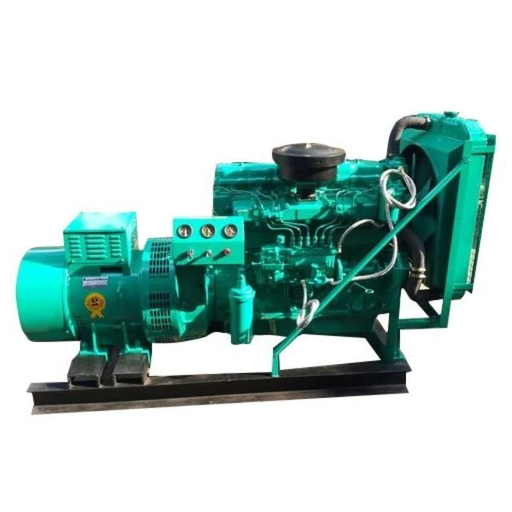
Understanding running watts vs. starting watts
Continuous watts or running watts is the metric that describes the energy that an appliance or device will utilize during normal operations. To operate, the appliance might require additional power in the form of starting watts, which pertain to electric motors with built-in appliances like air conditioners or electric refrigerators. Simply put, sizing a suitable generator for your house will involve assessing the total running watts and the highest starting wattage of a device that can be employed at the same time.
- Identify Running Wattage: Consider individually every appliance that you wish to power along with the running wattage per item (E.g a refrigerator would require 700 watts). Summarize those values.
- Account for Starting Watts: Identify the appliance with the highest starting watt requirement. (For instance: an air conditioner might require2200 starting watts but only 1500 running watts). Add the surge wattage on top of your total running watts.
Therefore, if the aggregate of running watts for set devices dedicated is 3000 watts and the peak starting watts among them is 2200 watts, then a generator rating of at least 5200 watts would be ideal. With this strategy, you can be sure that your generator does not exceed its maximum capacity.
Factors affecting generator size selection
For the size of the generator, I always think of the performance and reliability that will be achieved. My first step is to compute the total running wattage used by devices to be powered. This process includes noting down each item’s wattage consumption, summing them all together, and adding the surge wattage for refrigerators, air conditioners and other devices. For example, while a refrigerator has 700 running watts, it surges to 1500 watts on startup.
Next, I analyze the load type whether inductive or resistive. Electric motors are an example of inductive loads that need more additional starting power, therefore, my calculations would need further adjustments. For example, a generator rating should be able to sustain the highest surge wattage plus running wattage to avoid overload.
Private residences typically require a single-phase generator set with a voltage of 120/240. Industrial applications may need a three-phase generator set with higher voltage ratings. These technical particulars rely on the devices being fed power, thus, the output of the generator set needs to accommodate such parameters and is crucial to match.
Finally, I account for the environmental factors which are altitude and temperature. Increased altitude and extreme temperatures can diminish the efficiency of the generator, so I opt for a unit with added capacity to mitigate loss in performance under such conditions.
By incorporating these elements methodically, I know with certainty that I will select a generator which fulfills both my technical specifications and operational requirements.
What are the best portable generators for home backup?
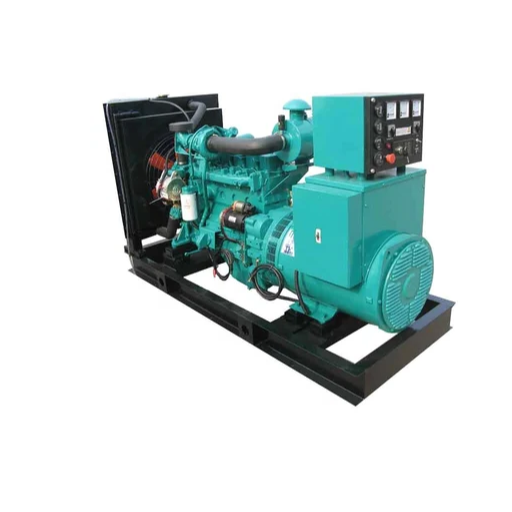
Dual fuel portable generators for flexibility
The key advantage of dual fuel portable generators is the added flexibility offering a seamless switch between propane and gasoline. This dual functionality assists the users in accommodating use cases which require a specific fuel type, or to power the generator when there is a fuel shortage.
- Output Wattage: Choose a model with sufficient running and peak wattage. For instance, a generator that produces 9,000 starting watts and 7,500 running watts is able to power essential household appliances.
- Fuel Efficiency: Examine the different modes maximum fuel efficiency can be achieved. Usually, propane offers longer run time duration, but has a lower output wattage than gasoline.
- Tank Capacity And Runtime: Opt for models like one capable of delivering 10 hours of runtime at 50% load on gasoline ensuring practical, long lasting operation.
- Switching Mechanism: Confirm the ease of switching between fuel types, preferably units with an automatic fuel selector to enhance performance while enhancing convenience.
- Portability and Design: Features like rugged wheels on a compact frame make the generator easy to move. This is essential during emergencies.
Using a dual fuel generator with the aforementioned features will provide reliable power backup designed for a range of scenarios.
High-capacity portable power stations for clean energy
Portable power stations that boast high capacity are a proficient design as they allow for effective energy storage as well as aid in effortlessly using clean energy. My ideal power station accounts for these aspects to ensure technical reliability and practical performance:
- Battery Capacity: For high-demand scenarios such as camping, emergency backup, or powering multiple devices, I would recommend a capacity of no less than 1000Wh to 2000Wh. This guarantees sufficient energy storage for prolonged activities.
- Output Power: The station should provide a continuous output of 1000W or more, and a surge capability of at least 1500W in order to power more demanding devices which require more power while starting up.
- Rechargeability: An efficient recharging rate of 150W or more accelerates the rate at which the battery is replenished, which, along with AC wall outlets, solar input with MPPT (Maximum Power Point Tracking) controllers, and car chargers, make the model more ideal.
- Portability: I hold designs which are durable and lightweight in high regard. Ideally, they would weigh between 30 to 50 pounds and have ergonomic handles or wheels for added mobility.
- Safety Features: Reliable operation is ensured with built-in protections such as overcharge, short-circuit, and temperature controls.
- Output Ports: Powering a variety of devices, from laptops to appliances, becomes effortless with multiple outputs such as AC outlets, USB-C ports, and DC outputs.
Through these factors, I ensure that the portable power station I choose is not just a powerful clean energy device but also suits my energy requirements.
How do I install and maintain a home backup generator?
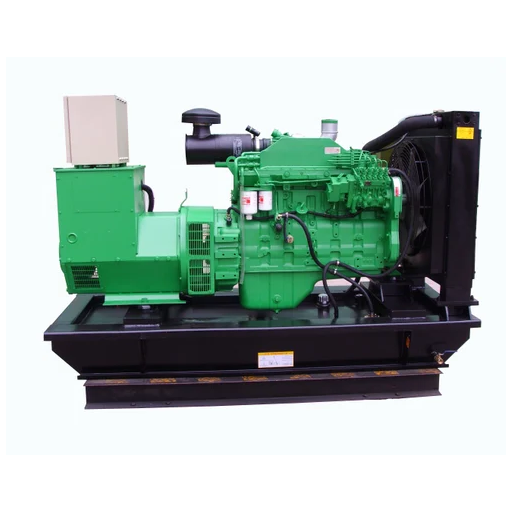
Professional installation vs. DIY setup
When evaluating whether to install an at home generator by myself or hire a professional, I take into consideration factors such as complexity, safety, and compliance with local regulations. Oftentimes, it tends to be more efficient to hire a professional to assist with installing larger standby generators, which normally average between 5,000 to 20,000 watts worth of power. Certified electricians can also help with the necessary integration of any gas or propane lines, assuming they are needed, as well as ensuring compliance with any safety codes.
It would require much more effort to seek professional assistance with smaller portable generators that are below 7,500 watts. A DIY setup for such a system is much more plausible, especially when there are extension cords or a transfer switch inlet box. For the sake of proper safety measures, especially with power systems, it is always recommended that cords don’t exceed the necessary limits. In this case, important cords to locate encompass refrigerators as well as sump pumps, ensuring there won’t be any overloading. Regardless of what approach a person chooses, safety is always a priority, therefore, proper grounding is paramount when it comes to electrical safety and following NEC guidelines.
Oftentimes, DIY alternatives tend to be more appealing from a financial standpoint in the short run. That being said, professional installation does offer long-term reliability, giving me peace of mind with proper calibration and troubleshooting. Certain alternatives do come with their downsides, such as improper installation, risking losing equipment, or gaining safety violations, so I tend to choose whichever option fulfills my capabilities optimally.
Essential generator accessories and transfer switches
In aspects of generators’ usage, it is necessary to take into account the required parts and other transfer switches that would make it perform optimally as well as safely. The Automatic Transfer Switch (ATS) is one of those components that automatically switches the load between the generator and utility power in case of power being lost. The switch needs to be appropriately rated based on the generator’s output and the load being served. For example, a modern residential setting will have an ATS rated at around 100, while most commercial and industrial setups will have them rated around 300 – 400A.
A dependable fuel system that serves the generator’s fuel type, whether diesel, gas or propane, is another important accessory that includes tanks and lines Fuel consumption also needs to be estimated in order to ascertain the number of hours that can be run; for example, diesel generators with a 20kw rating run at full load will use 1.6 gallons per hour.
It is also important to note that fuel regulation components, such as voltage regulators alongside Automatic Voltage Regulators (AVR), make sure that voltage output is optimal for sensitive equipment and electronics. To avoid overpowering devices and transient voltage, surge protectors ought to be fitted as they offer additional voltage control.
For observant and austere monitoring and maintenance, performance data in regards to the generator like loads, frequency and temperature should be presented in easy to read displays on control screens as well as being incorporated into remote monitoring systems.
Finally, safety elements like grounding rods, grounding kits and weatherproof enclosures are needed for compliance with the national electric code, as well as protecting the equipment from harsh environmental conditions. Each of these accessories should be selected according to the specification for the generator to ensure reliability of operation and the longevity of the components.
Maintenance tips for optimal performance and longevity
To achieve both efficient operation and long-term reliability for the generator, I suggest a routine maintenance procedure. Start with maintaining checks on critical parts like the air filters, fuel systems, and spark plugs. Cleaning or replacing them should be done as defined in the owner’s manual. For example, air filters should be replaced or cleaned once every month, while fuel filters should be replaced every 250 to 300 hours of usage to prevent clogging and subsequent contamination.
Another crucial aspect is checking the levels of oil and changing them when necessary. Most generators require an oil change after the first 20-30 hours of use, and every 100-150 hours afterwards. The oil being replaced should always match the viscosity and quality requirements, most environments use SAE 10W-30 which allows for lubrication efficiency and protects the engine.
Cleaning terminals and checking the charge levels periodically aids in proper battery maintenance as well. The charging systems should meet the standards for voltages which is usually 12.6 to 12V for normal lead-acid batteries. This allows for dependable starts during operation. Make sure to check coolant levels too and use the required type, for example a 50/50 mix of ethylene glycol coolant and distilled water.
In the end, load tests are conducted to assess whether the generator can meet operational requirements. This is typically done by operating the unit at rated load of 50% – 75% for a specific duration. Check grounding connections and exhaust systems regularly to verify compliance with safety standards such as NEC Article 250 on grounding. If you follow these instructions properly, you can improve the performance of the unit significantly and increase its lifespan.
What safety considerations should I keep in mind when using a generator?
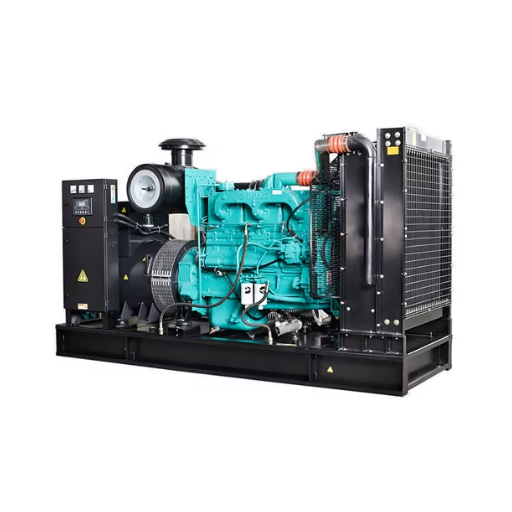
Proper ventilation and carbon monoxide awareness
Detrimental effects brought about by carbon monoxide (CO) poisoning can be avoided through proper ventilation when a generator is in use. Generators are best utilized outdoors in a ventilated region, further than twenty feet away from doors, windows, or vents so that the toxic fumes can not easily enter into rooms. Carbon monoxide is a colorless and odorless gas produced during the combustion of gasoline, diesel, or other products, which makes it extremely hazardous in overly confined settings.
For nearby structures, make sure to set up carbon monoxide detectors that can monitor continuously for safe operation. The Occupational Safety and Health Administration (OSHA) has a recommended level of CO exposure of 50 parts per million (ppm) during 8-hour work shifts, while the National Institute for Occupational Safety and Health (NIOSH) has a limit of 200 ppm for 15 minutes. Keeping these numbers in mind is critical for the safety of employees working around the generator.
Furthermore, examine and service the exhaust to make certain that there are no leaks or damages. Approved extension cords should be used in conjunction with the output of the generator and ensure the system is not being overloaded to lessen the likelihood of exhaust complications and strain. Following the requirements outlined above will greatly reduce the potential dangers that come with carbon monoxide toxicity.
Fuel storage and handling precautions
Ensuring safety and operational efficiency stems from the adequate management and proper storage of the fuel. First, keep fuel in labeled containers that are OSHA and NFPA approved. For diesel fuel, store it in containers that are DOT and UN certified to reduce the risk of spillage or impact when being stored. Where possible, always keep the storage temperature below 68°F (20°C) to minimize the chances of fuel degradation or microbial growth.
Second, the area used for fuel storage should be free from any sources of ignition and should allow for adequate ventilation. The storage area should provide secondary containers that can carry at least 110% of the largest container’s capacity as per EPA recommendations so as to prevent and control spills efficiently.
For the purpose of handling, always ensure there is no damage to the containers or transfer equipment before usage. During refueling, always use grounded and bonded transfer equipment to prevent static charge static. In addition to this, rotate the stored fuel at intervals of 6 to 12 months in order to prolong its viability and eliminate the chances of sediment buildup.
By adhering to the aforementioned steps and relevant technical requirements, I stand to mitigate risks regarding improper fuel storage and handling actions, all the while ensuring dependable generator function.
Reference sources
Frequently Asked Questions (FAQs)
Q: How do I determine the right wattage for my home backup generator?
A: To determine the right wattage, calculate the total power consumption of the essential appliances you want to run during an outage. Add up their running watts and consider the highest starting watt requirement. For most homes, a generator between 5,000 and 7,500 watts is sufficient for backup power. However, larger homes or those with high power demands may need 10,000 watts or more.
Q: What’s the difference between an inverter generator and a conventional generator?
A: Inverter generators produce cleaner, more stable AC power, making them ideal for sensitive electronics. They’re generally more fuel-efficient and quieter than conventional generators. However, they typically have lower power output and are more expensive. Conventional generators offer higher power output and are more suitable for heavy-duty applications, but they’re louder and less fuel-efficient.
Q: Can I use a portable generator as a home standby generator?
A: While portable generators can provide temporary backup power, they’re not designed for long-term home standby use. Home standby generators, like those from Generac, are permanently installed and automatically switch on during a power outage. They offer higher power output and longer run times and are better suited for whole-house backup. Portable generators are more appropriate for occasional use or as power solutions for RVs and camping.
Q: What size generator do I need for RV use?
A: For RV use, the generator size depends on your power needs. A 2000-4000-watt inverter generator is usually sufficient for most RVs. These can run essential appliances like air conditioners, refrigerators, and small electronics. For larger RVs or those with higher power demands, you might need a 5000-7000-watt generator. Consider factors like fuel efficiency, noise level, and portability when choosing an RV generator.
Q: What are the advantages of natural gas generators for home backup?
A: Natural gas generators offer several advantages for home backup power. They provide a continuous fuel supply, eliminating the need for refueling during extended power outages. They’re cleaner-burning than diesel or gasoline generators, producing fewer emissions. Natural gas generators are also more convenient, as they connect directly to your home’s gas line. However, they typically have a higher initial cost and may not be available in all areas.
Q: How do I choose between gas and propane generators?
A: When choosing between gas and propane generators, consider factors like fuel availability, storage, and runtime. Gas generators are typically more powerful and fuel-efficient, but gasoline has a shorter shelf life. Propane generators run cleaner, have longer fuel shelf life, and are often quieter. Some generators, known as tri-fuel generators, can run on gas, propane, or natural gas, offering maximum flexibility. Your choice may depend on your specific needs and fuel availability in your area.
Q: What’s the difference between running watts and peak power in generators?
A: Running watts refer to the continuous power a generator can supply, while peak power (also called starting watts) is the maximum power output a generator can provide for a short period, usually to start motor-driven appliances. When sizing a generator, ensure it can handle both the total running watts of all devices you plan to power simultaneously and the highest starting watt requirement of any single device. This ensures your generator can handle both continuous power needs and momentary surges.
Q: How do I maintain my home backup generator to ensure reliable power?
A: To maintain your home backup generator and ensure reliable power, follow these steps: 1) Regularly check and change the oil as recommended by the manufacturer. 2) Keep the air filter clean and replace it when necessary. 3) Check and clean spark plugs periodically. 4) Run the generator monthly for about 30 minutes to keep the components lubricated. 5) Keep the generator clean and free from debris. 6) For standby generators, schedule annual professional maintenance. 7) Store fuel properly and use fuel stabilizers for gasoline. Following these steps will help extend your generator’s lifespan and ensure it’s ready when you need backup power.






